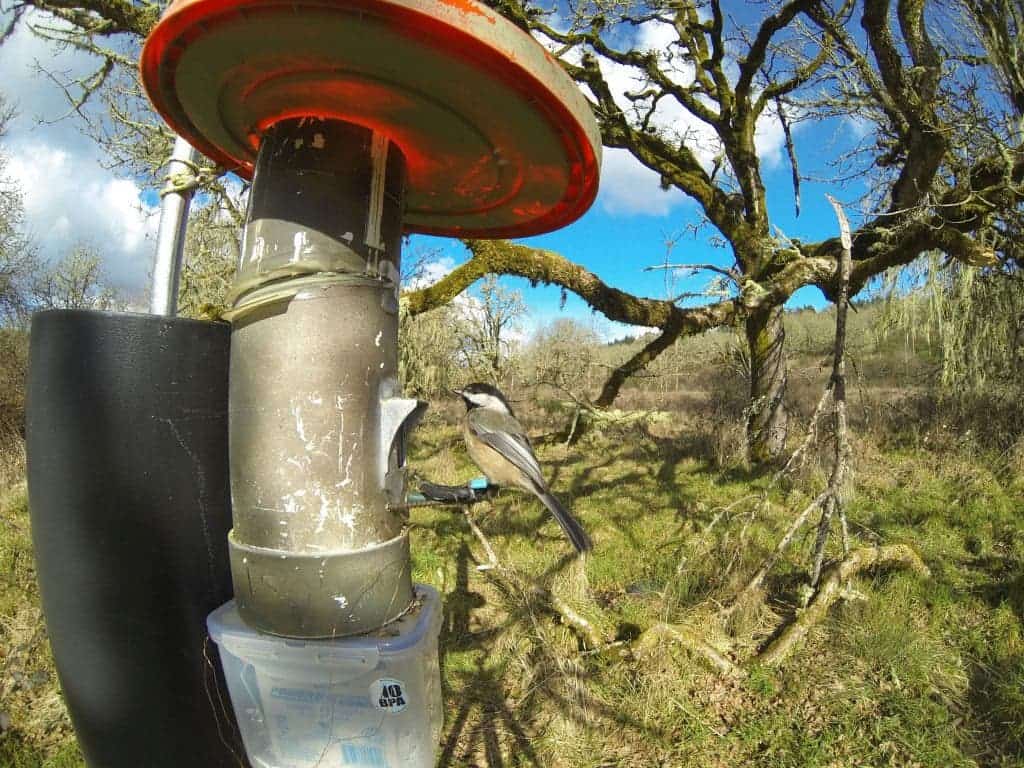Bird feeders out there, rejoice! The small songbirds that visit the feeders in your yards are unlikely to develop an unhealthy reliance on them. In a new study, researchers looked at the feeder use habits of black-capped chickadees (Poecile atricapillus) and found nothing to suggest such a reliance — which was becoming a concern among feeders around the world.

Intentional feeding of wildlife by humans is a widespread activity that occurs throughout the world and supports a multi-billion-dollar global industry. For example, more than 50 million people in the United States provide supplemental food for birds, with more than US$4 billion spent annually on bird food, feeders, and accessories.
However, the extensive and widespread nature of intentional feeding has a range of consequences for wild, free-ranging animal populations, which are best documented in birds. These include negative effects such as facilitating disease transmission, enhancing competition and impairing breeding performance, and restructuring local communities.
As more is learned about how wild bird populations are impacted, discussion around whether such practices should be regulated has led some countries to establish policies and best management practices regarding supplemental feeding of wildlife. This is especially relevant for northern latitudes, where bird feeding is more common.
Nevertheless, very few studies have actually evaluated whether free-ranging birds increase their reliance upon supplemental food sources during demanding periods such as winter — so the debate on whether or not birdfeeders produce an unhealthy reliance is still done in the blind. Or rather, it was until now.
“There’s still much we don’t know about how intentional feeding might induce changes in wild bird populations, but our study suggests that putting out food for small birds in winter will not lead to an increased dependence on human-provided food,” Jim Rivers, an animal ecologist at Oregon State University and co-author, said in a statement.
The researchers studied the feeder use habits of black-capped chickadees subjected to one of these flight-feather-clipping treatments: heavy clipping, light clipping or, as the control, no clipping. Experimental removal of primary flight feathers is an established technique for altering wing loading and increasing the energy costs of flight.
The chickadee was specifically chosen because of its small size and the fact that frequents feeders during winter throughout its range. It has high daily energy requirements and typically takes one seed at each feeder visit, allowing for a clear measure of feeder visitation rate. The birds were tagged with chips, and 21 feeders were filled with sunflower seeds.
The study found that the experimentally handicapped chickadees, those experiencing elevated flight costs, didn’t increase their rates of visitation to the feeders. Instead, feather-clipped birds actually decreased their feeder use for a couple of weeks, probably due to less exposure to predation, but then used the feeders at levels similar to the unclipped control birds.
“Feather-clipped chickadees reducing their use of feeders relative to control birds suggests that foods in the environment were sufficiently available to compensate for increased flight costs and allowed them to cut back on feeder use,” Rivers said. “It’s clear that the chickadees in our study didn’t increase their visitation rates nor did they increase their reliance on supplemental feed.”
The study was published in the Journal of Avian Biology.


